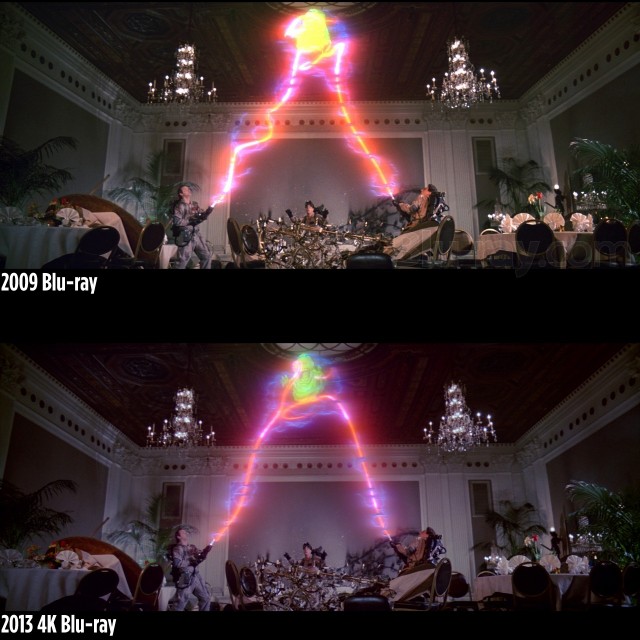By the end of the year, new Blu-ray UHD 4K discs will be available.

Comparison 1080p and 4K (clickable)
If you bought a TV with a resolution of 4K, and do not know why - you are lucky. For the New Year (or, as the Americans say - for Christmas) , disks with the content of the new standard - Blu-ray UHD (3840 × 2160) will appear on store shelves. The new standard, approved in May of this year , supports the HDR-image, an expanded range of colors and a function called "digital bridge". The first player supporting such discs was introduced at CES in January .
Improvements in video standards are becoming less and less obvious. One could easily notice the difference between a DVD and a VHS cassette, it is quite easy to find differences in a 1080p picture and a standard DVD. But are the differences between the pictures of 3840 pixels and 1080 already important, especially on TVs no larger than 32 ”?
')
And even if you notice the difference and enjoy it - the era of digital media is a thing of the past. It makes no sense to store and use discs, when any movie can be viewed on the Internet - it is enough to have a good Internet connection. Ease of use of streaming content lies in the fact that you can easily start watching movies on TV, then switch to a laptop, and then to a tablet. Many users have not touched disks for a long time, and replaced the optical drive in laptops with an additional SSD.

Comparison of Netflix and Blu-ray (clickable)
Optical disc manufacturers understand this, and therefore, along with the new standard Blu-ray UHD, they offer a new digital bridge service. The player that supports this standard will have two functions - copying and exporting. Copying of content can be done on “authorized” media, and export can be carried out to other devices that support this scheme.
How the media will be authorized for copying is still unknown. But it’s pretty clear how DRM protection will work when “exporting” data. While you do not need an Internet connection to watch a movie from a disc on the main equipment, to export a video stream to another device you will need to connect it to the Internet, where the cloud system authorizes this operation.
The new content will use the H.265 codec and be delivered on two-layer and three-layer disks of 66 GB and 100 GB, respectively. This is enough to accommodate even a three-hour film - but at the same time additional content will have to be delivered on a separate disc. Also, the content will support the latest sound schemes DTS: X, Dolby Atmos and Auro-3D.
However, such a system still looks quite cumbersome and confusing . Differences between good streaming video and watching a movie from a disc are difficult to determine by eye. It is difficult to say how many people will rush to the stores for the next “improved” copy of the same films, converted from 1080p to 4K, given that the latest video consoles from Sony and Microsoft do not support UHD standard discs.
Source: https://habr.com/ru/post/366063/
All Articles